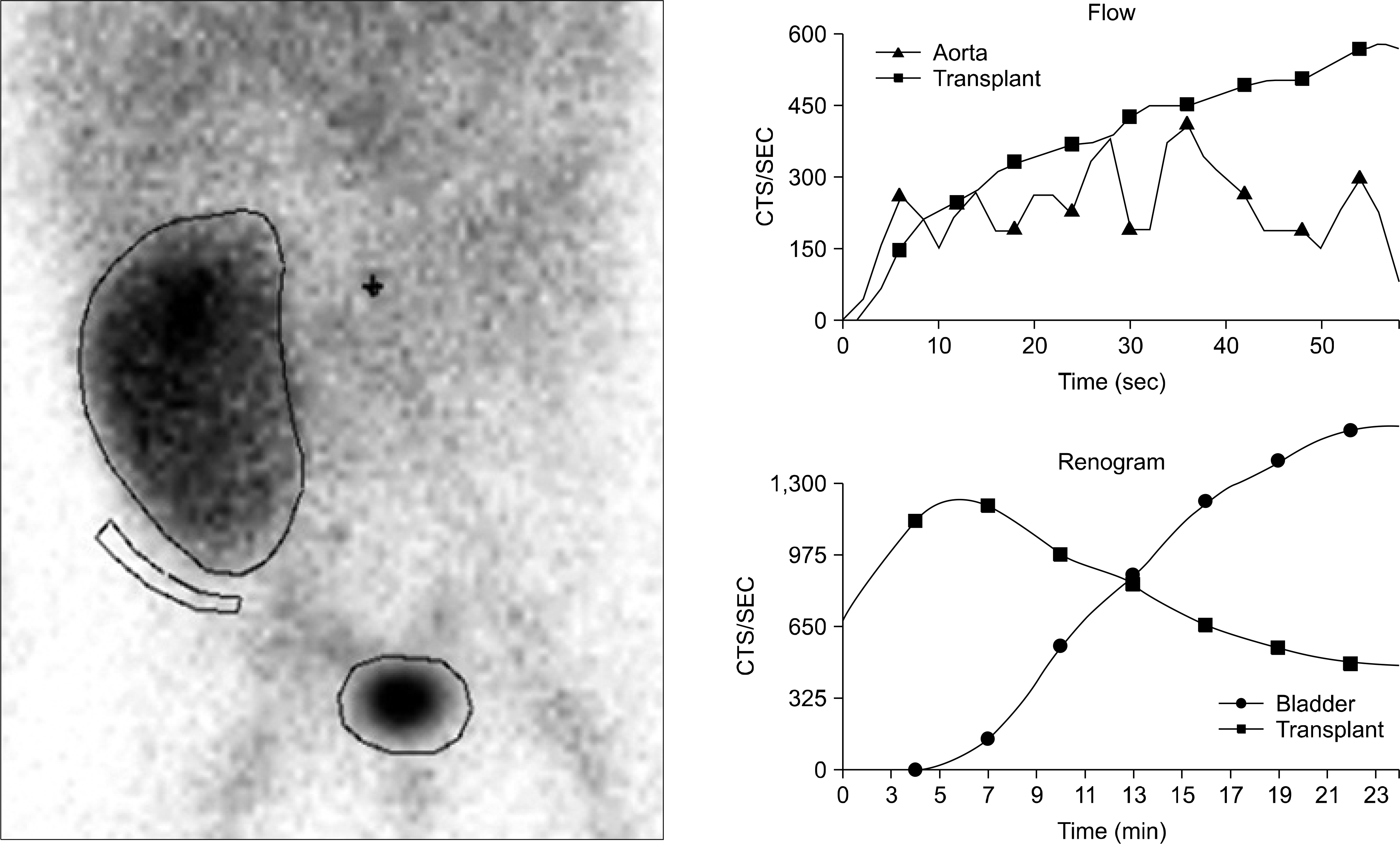Abstract
Immunologic responses of infants and younger children differ from those of adults. Therefore, application of different pretransplant strategies for antibody depletion in younger ABO-incompatible transplant recipients is appropriate. A 12-month-old male infant with end stage renal disease after acute tubular necrosis was scheduled to undergo kidney transplantation from an ABO-incompatible living donor. He did not undergo pretransplant plasmapheresis, as the titer of the anti-ABO antibody was less than 1:4. After kidney transplantation, posttransplant renal function and anti-ABO titers were stable until posttransplant 2 years.
References
1). Shishido S, Hyodo YY, Aoki Y, Takasu J, Kawamura T, Sakai KK, et al. Outcomes of pediatric ABO-incompat-ible kidney transplantations are equivalent to ABO-com-patible controls. Transplant Proc. 2012; 44:214–6.

2). Roback JD, Combs MR, Grossman BJ, Hillyer CD. Technical manual. 16th ed.Bethesda, MD: American Association of Blood Banks;2008.
3). West LJ, Pollock-Barziv SM, Dipchand AI, Lee KJ, Cardella CJ, Benson LN, et al. ABO-incompatible heart transplantation in infants. N Engl J Med. 2001; 344:793–800.

4). Klinman NR. The "clonal selection hypothesis" and current concepts of B cell tolerance. Immunity. 1996; 5:189–95.

5). Cadoz M. Potential and limitations of polysaccharide vaccines in infancy. Vaccine. 1998; 16:1391–5.

6). Hartley SB, Crosbie J, Brink R, Kantor AB, Basten A, Goodnow CC. Elimination from peripheral lymphoid tissues of self-reactive B lymphocytes recognizing mem-brane-bound antigens. Nature. 1991; 353:765–9.

7). Hartley SB, Cooke MP, Fulcher DA, Harris AW, Cory S, Basten A, et al. Elimination of self-reactive B lymphocytes proceeds in two stages: arrested development and cell death. Cell. 1993; 72:325–35.

8). Springer GF, Horton RE. Blood group isoantibody stimulation in man by feeding blood group-active bacteria. J Clin Invest. 1969; 48:1280–91.

9). Fong SW, Qaqundah BY, Taylor WF. Developmental patterns of ABO isoagglutinins in normal children correlated with the effects of age, sex, and maternal isoagglutinins. Transfusion. 1974; 14:551–9.

10). West LJ. B-cell tolerance following ABO-incompatible infant heart transplantation. Transplantation. 2006; 81:301–7.

11). West LJ. ABO-incompatible hearts for infant transplantation. Curr Opin Organ Transplant. 2011; 16:548–54.

12). Fan X, Ang A, Pollock-Barziv SM, Dipchand AI, Ruiz P, Wilson G, et al. Donor-specific B-cell tolerance after ABO-incompatible infant heart transplantation. Nat Med. 2004; 10:1227–33.

13). Tyden G, Kumlien G, Berg UB. ABO-incompatible kidney transplantation in children. Pediatr Transplant. 2011; 15:502–4.
Fig. 1.
Renogram on postoperative day 8. Normal cortical transit and renal excretion of the radiotracers. Transplanted kidney shows within normal limits of blood flow and uptake.





 PDF
PDF ePub
ePub Citation
Citation Print
Print


 XML Download
XML Download